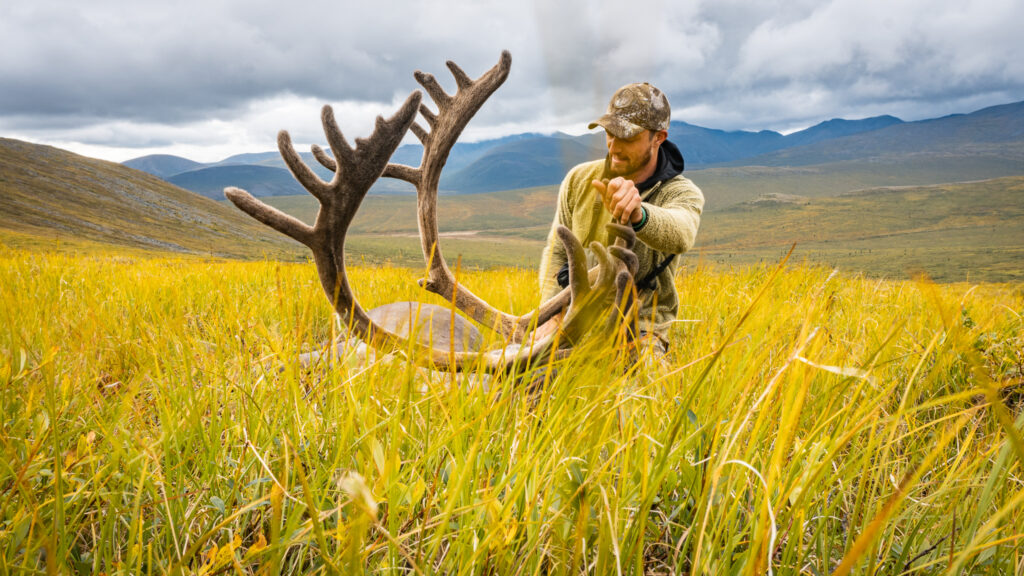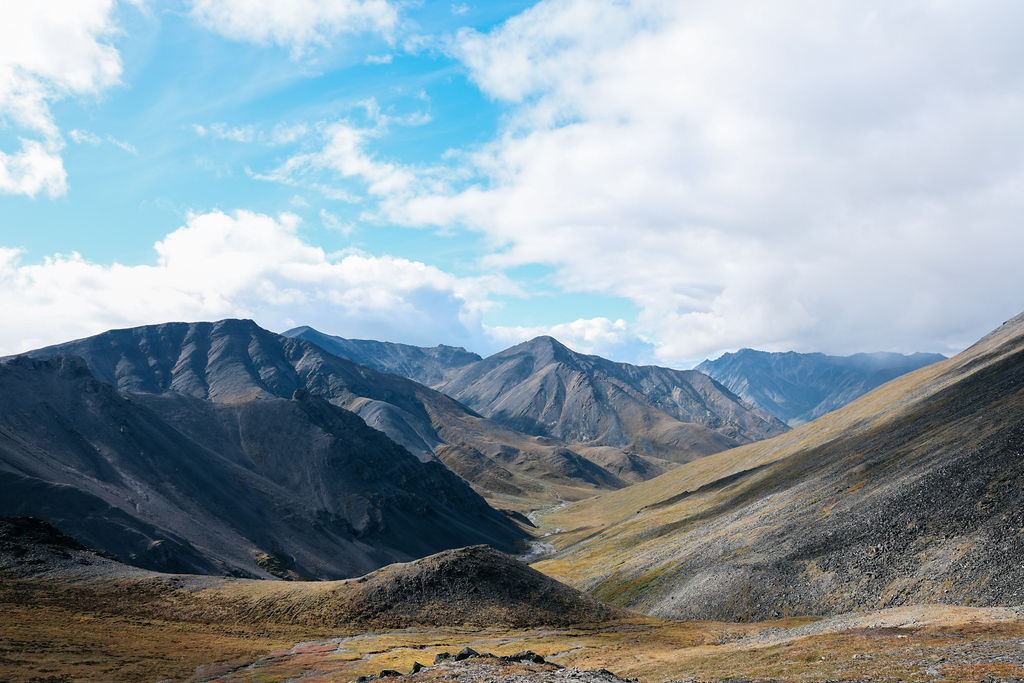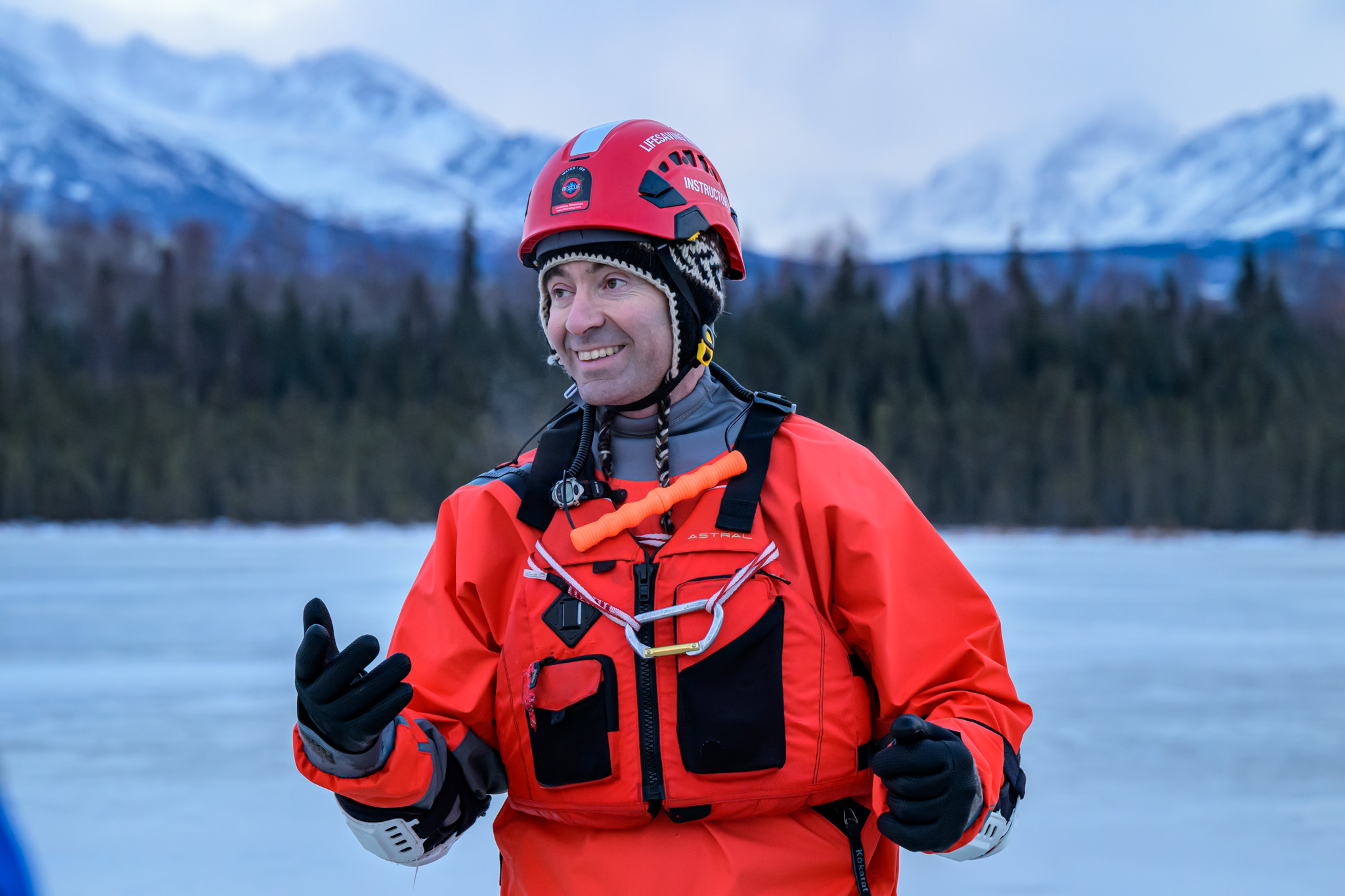What It’s Really Like to Hunt the Brooks Range
Heart-stopping vistas, unmatched solitude, and once-in-a-lifetime wildlife encounters are business as usual – in short, it’s like a dream

Feature photo courtesy of Kelly Reynolds
When the snow is deep in the Brooks Range, caribou will often use the high mountain ridges for easier access to forage and to better evade wolves. I killed a bull high up on one such ridge years ago. Instead of gutting the caribou right away, I sat next to him and stared out across the mountains and valleys that stretched as far as the eye could see in every direction.
To enjoy a moment like that is the most basic yet soul-filling reason that I hunt wild country.
The Magic of the Brooks
As a lifelong Alaskan and hunter, I’ve encountered few, if any, places that better embody the “spirit of the hunt” more than the Brooks Range. And this feeling is shared by just about everyone I’ve met who has spent time hunting its mountains and valleys.
The Brooks Range is Alaska’s northernmost mountain range. It stretches more than 700 miles across Alaska, from the border of Canada’s Yukon territory almost all the way to the Chukchi Sea. The north side of the range is open country, while much of the south is a mixture of boreal forest and tundra.
All mountain ranges are inspiring but there is something extra unique, even magical, about the Brooks. Trying to describe that magic is difficult, but most who’ve been there say it has to do with the remoteness, the incredible wildlife, and a sense of timelessness that you can’t really find anywhere else in the world.
But for the last several years, the proposed Ambler Road has hung over the future of the Brooks Range like a shadow.
If built, the Ambler Road would be a 211-mile private industrial corridor designed to help foreign-owned companies develop at least four open-pit mines in the western part of the range. It would damage fish and wildlife habitat, negatively altering the place for local and visiting hunters, as well as other outdoor recreationists.
This is why hunters and anglers recently celebrated the Bureau of Land Management’s final Supplemental Environmental Impact Statement, which indicates the agency’s intention to prevent construction of the Ambler Road. While this is great news, it’s not the final step in the process, and sportsmen and sportswomen await the BLM’s binding decision later this year. In the meantime, the outdoor community needs to continue to stay engaged to keep the Brooks Range a place where dream hunts can come true.

Like a Fever Dream
The Brooks Range offers many opportunities to hunt animals like moose, Dall sheep, and grizzlies, but, more than any other species, it’s caribou that embody the arctic wilderness. Most visiting hunters come with the hope of taking a nice animal but, once in the field, realize the killing part is only a small aspect of what makes a hunt in the Brooks Range exceptional.
Jim Dau is a retired caribou biologist for the Alaska Department of Fish and Game. He has lived in Kotzebue in northwest Alaska since 1988, serving as the area biologist for 15 years, then, for ten years, as the biologist for the Western Arctic Caribou herd. Dau points out how vital caribou are for people, a wide range of dependent wildlife, and even the land.
“I can’t overemphasize the importance of caribou to people, especially subsistence users out here,” Dau says. “For a lot of nonlocals, hunting the Western Arctic Caribou herd is the trip of a lifetime. But a big surprise for people from the Lower 48 is how wild the place is. It’s so hard to find solitude these days. Here, you can.”
Bill Vanderheyden, owner and chief engineer of Iron Will Outfitters, which makes broadheads and archery gear, has hunted the Brooks Range three times and says there is no place on earth like it.
“I’ve hunted a number of wilderness areas in the Lower 48, but nothing nearly this remote,” Vanderheyden says. “The feeling of being truly remote and alone was unexpected, but also fed my soul.”
Vanderheyden encountered wildlife including muskox, wolverines, bears, wolves, and caribou. One experience that really stands out for him was while he was stalking a group of caribou.
“Two big white wolves cut in and proceeded to chase the caribou over a ridge,” he says. “It felt timeless, like man had been sharing the landscape with these wild animals, hunting caribou with a bow and arrow alongside the other predators for thousands of years.”
Ryan Sapena, the marketing manager for Seek Outside, says the Brooks Range is in a class of its own. When his great uncle – the family’s most revered hunting mentor – passed on, Sapena and his dad and brother used a portion of the inheritance to make a fly-in caribou hunt to the Brooks Range in his honor.
“You can’t compare the Brooks Range to another place,” Sapena says. “The trip was crazy. It’s hard to explain it to someone. It was kind of like a fever dream.”
The first morning, Sapena was outside his tent, waking up with a cup of coffee. Suddenly, a cow and calf caribou came charging across the tundra toward camp. A wolf was chasing them. The three animals were within 75 yards when the wolf smelled the men. The wolf stopped and stared at Sapena and his brother.
“The wolf looked almost disappointed that we hadn’t helped in slowing his quarry down,” Sapena says. “Then it was almost as if it sighed and continued after the cow and calf. I remember feeling more a part of the natural cycle than I had ever been. It was something that I will probably never get to experience again.”

At All Costs
Toward the end of my conversation with Sapena, we talked about the challenges of conserving wild places as civilization and its desire for resources extracted from the land continues to grow. There are no easy solutions to achieving a decent balance between the two. But he believes that the Brooks Range offers far more value left the way it is than it would if it were turned into a mining district.
“The Brooks Range is a place that, at all costs, should be protected,” he says.
When I reflect on my hunts and wanderings in the Brooks Range, they do feel like dreams. I remember the night after I killed the bull on the ridge, four wolves visited my camp. In the morning, their tracks showed that they had come within a few yards of the tent. Without breaking their stride, they ran a circle around the bull and another dead caribou we had stashed nearby, before heading in a straight line toward a valley where a herd of caribou had been the day before.
I didn’t think much of it at the time. It was just business as usual for the Brooks Range.
To maintain the Brooks Range as a dream hunting mecca for hunters and anglers, we need to stay engaged and continue to let the BLM know that sportsmen and sportswomen oppose the Ambler Road before the agency makes its final decision later this year.
Sign the petition to defend the Brooks Range’s unrivaled hunting opportunities.
Header Image: Photo courtesy of Kelly Reynolds



